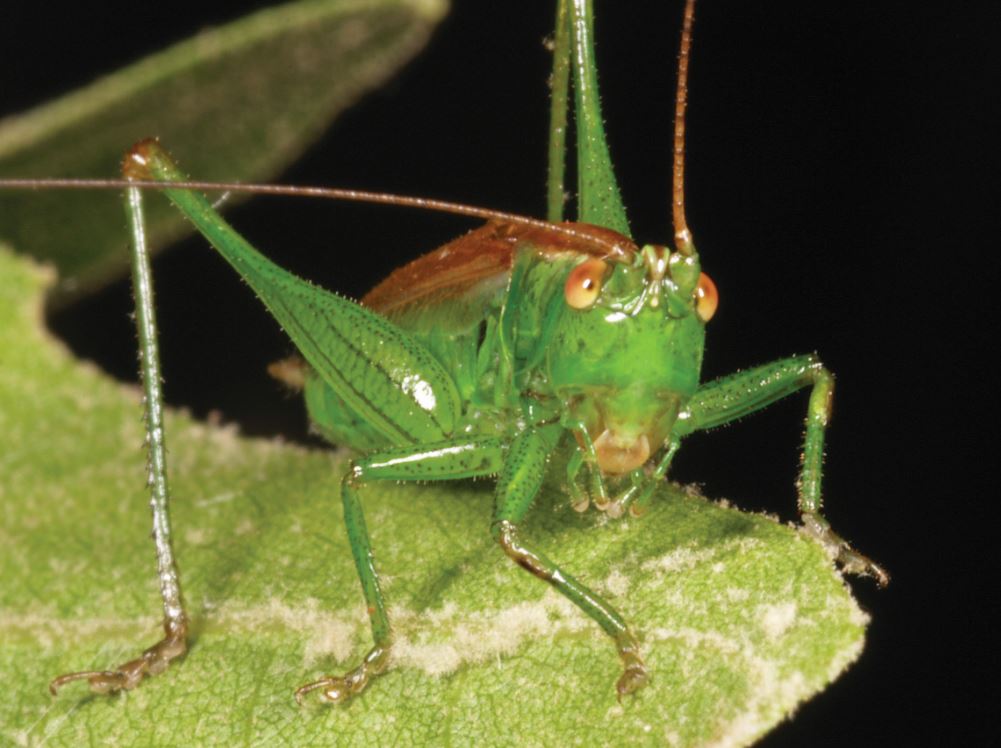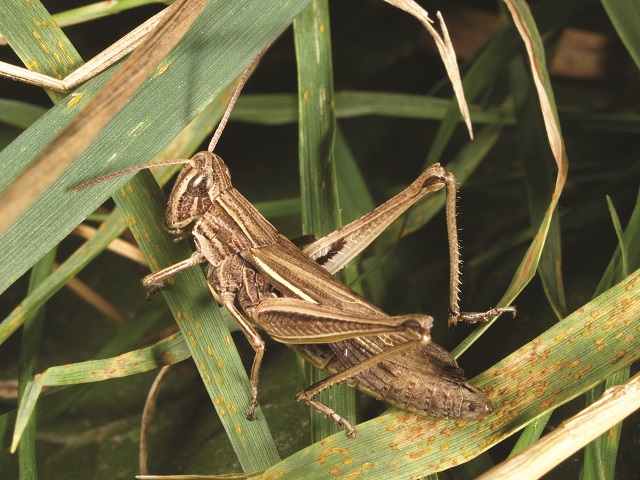Grasshoppers, crickets and bush-crickets
Even in their restricted sense, excluding the Dictyoptera, Mantodea and Phasmida, the Orthoptera still form the largest of the Polyneopteran or ‘orthopteroid’ orders; they are probably most closely related to the Phasmida.
Included within the group are the locusts, which are among the most devastating crop pests in many parts of the world; hence the Orthoptera as a whole are relatively well studied, at least by economic entomologists.
Members of the Orthoptera are generally medium to large insects, with long hind-legs that are often modified for jumping; the enlarged hind femora have a distinctive “herring-bone” pattern of musculature. Their mandibulate mouthparts are often cited as the classic example of the biting and chewing type.
 Long-winged conehead Conocephalus discolor Credit Roger Key
Long-winged conehead Conocephalus discolor Credit Roger KeyThe fore wings are generally narrow but thickened to form wing-covers that protect the much broader and more delicate hind wings when folded at rest. In several families the male fore wings form stridulatory organs, sometimes in combination with the hind legs. Females in some families have highly developed external ovipositors with which they lay their eggs in crevices in bark, plant stems or in the soil. Those groups that stridulate have a variety of hearing organs, either at the base of the abdomen or on the front tibiae.
 Chorthippus albomarginatus brown colour form Credit Roger Key
Chorthippus albomarginatus brown colour form Credit Roger KeyBeing relatively large insects, with distinctive colour patterns and well-defined gross morphological characters, many species can be identified from photos, or at least with a hand-lens, but in some families there are many colour varieties which can be confusing. In some groups the stridulatory calls, known as songs, can be useful for identification especially if the specimen cannot be seen clearly, and the experienced orthopterist can recognise many species in the field by their songs alone, rather like ornithologists.
Worldwide there are around 24,000 known species in 29 families; in Britain there are 33 species in 10 families.
Identification help